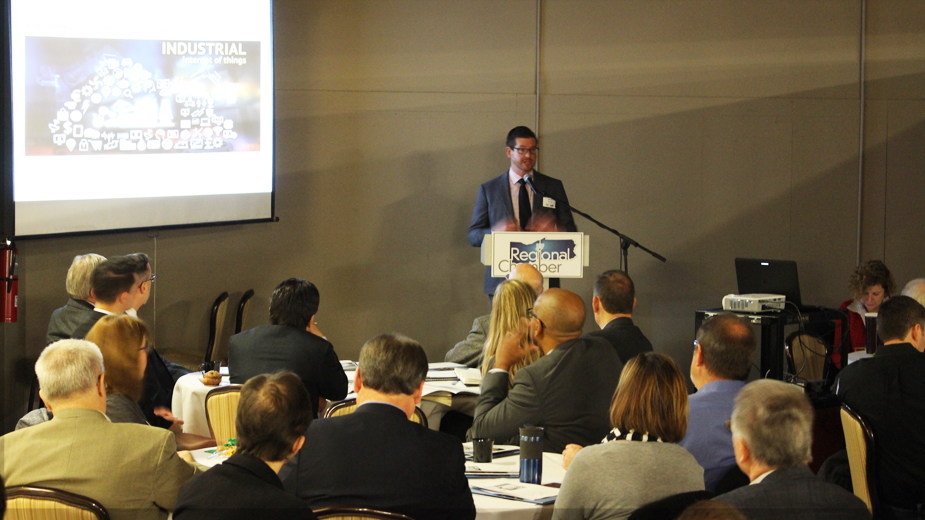Group Unveils Roadmap for Manufacturing in Digital Age
WARREN, Ohio – A group composed of private industry manufacturing specialists, development officials, and managers have put together a “roadmap” designed to help direct the future of manufacturing across northeastern Ohio.
TeamNEO, an economic development organization based in Cleveland, presented some results of the analysis Wednesday morning at the Tech Belt Energy Innovation Center. The findings focused on identifying ways to encourage companies in the region to adopt advanced technologies in their manufacturing processes.
The change could lead to a dramatic transformation of northeastern Ohio’s entire manufacturing economy, said Jacob Duritsky, vice president, strategy and research at TeamNEO. “Over the next five to 10 years, it could grow output in manufacturing by an incremental $4 billion to $11 billion,” he said.
A consortium of more than 20 representatives from private industry, academia and economic development organizations met frequently over a period of about six months to identify areas in which northeastern Ohio could excel. Since the region has a long-standing legacy in manufacturing, Ohio is fertile ground to build an entirely new culture based on advanced technology, Duritsky said.
At the center of this transformation is the Industrial Internet of Things, or IIot, a term applied to the use of digital strategies to improve efficiency, productivity and quality in the manufacturing sector.
This could include a small machine shop that places a digital sensor on a piece of equipment that alerts the owner when a component may require maintenance. Or it could provide better data to managers in order to provide accurate information as to operations on the factory floor.
“It could be used by companies all across the board,” he said. “You could be a 20-person machine shop, or you could be a multibillion national corporation that has a full-scale digital transformation plan.”
Duritsky said that manufacturing is still a vital part of the region’s economy, representing $45 billion, or about 21%, of the gross regional economy. Between 1990 and 2015, productivity in this sector improved 92%, and it is projected to grow another 73% by 2025.
“The idea that manufacturing isn’t important to the economy is something we want to take on,” he said.
Yet some sort of digital strategy is critical to survival in the new economy, said David Knowles, digital transformation accelerant at Rockwell Automation. Several years ago, Rockwell embarked on a digital strategy to improve its quality, on-time delivery and inventory control. Productivity has since improved between 5% to 6% annually at Rockwell’s plants.
“The need to have some sort of digital strategy moving forward is essential to your existence,” he told a group of about 50 who attended the event. “You have to ask, are we going to be a Sears or a Rockwell?”
Pictured: Jacob Duritsky, vice president of strategy and research, Team NEO.
Copyright 2024 The Business Journal, Youngstown, Ohio.



